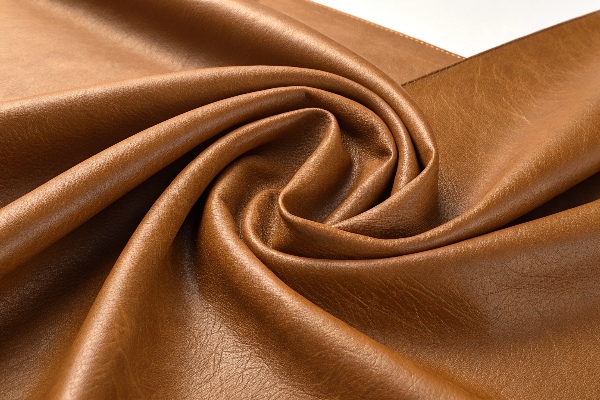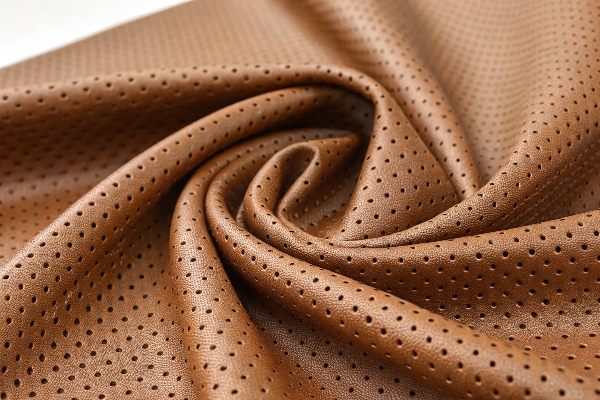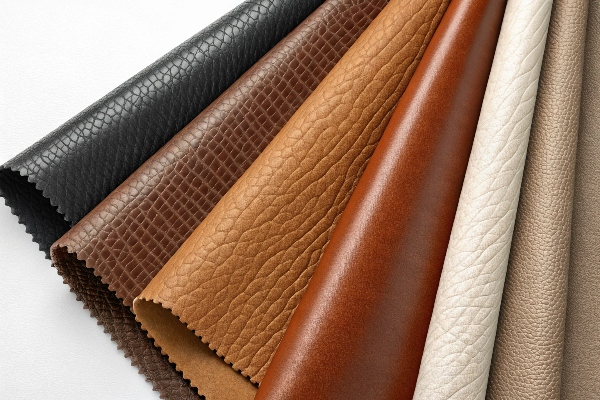A buyer wants a leather look but fears the cost. The worry grows as prices rise. PU leather steps in as the clean, affordable fix.
PU leather is a synthetic material made by coating a fabric backing with a layer of polyurethane. It copies the look and feel of real hide while cutting cost, weight, and animal use.

Many clients still wonder if this man-made hide can meet strict demands. I keep reading because one clear answer can unlock new product plans and save money.
Is PU leather good quality?
A designer fears peeling seats and angry reviews. The fear grows with each sample test. The cure sits in understanding how PU grades differ.
Good PU leather uses a thick, even coat on a strong fabric base. When made well, it resists wear, stays smooth, and keeps color for years in home, auto, and fashion use.

Breaking down quality factors
Quality is not one word. I watch four points each time I visit a mill.
| Factor | What I check | Simple test I use |
|---|---|---|
| Coating thickness | Micron gauge | Bend it; no white crack lines |
| Base fabric | Density in g/m² | Pull on warp and weft corners |
| Bond strength | Peel test data | Scratch with coin; layers stay together |
| Finish chemistry | Low VOC, REACH pass | Smell sample; no harsh odor |
A high-end PU leather starts with microfiber or fine nonwoven. The mill applies two or three polyurethane passes, then cures each layer. A matte or glossy top coat seals pores. I compare this to low-grade stock that has one thin pass on cheap polyester. That one often flakes. Good PU also gets UV and hydrolysis tests. I ask for 1,000 hours UV and 5-year hydrolysis proof for car seats. Users then feel soft hand, see stable color, and note easy cleanups with mild soap. So, quality is real when process and tests line up.
What are the disadvantages of PU leather?
A brand loves the low cost but fears hidden trade-offs. The fear pushes worries about breathability, eco score, and repair.
PU leather can trap heat, may crack if care is poor, and often comes from fossil-based resin. Disposal is harder than with natural hide or some bio leathers.

Looking at limits one by one
Heat and comfort
PU has a solid top coat. Air cannot pass well. In hot seats, sweat builds. I have sat in summer test cars and felt the stick. Vent holes and smart foam help, yet breathability still trails woven cloth.
Aging and cracking
If the factory skips stabilizers, hydrolysis breaks bonds over time. Humid sites speed this rot. I push clients to ask for ≥5P hydrolysis grade. Without it, cracks can show in two years.
Eco concerns
Pure PU uses oil-based polyols and is not easy to recycle. New bio PU uses corn or castor oil sources, cutting carbon by up to 30%. I guide buyers to pick recycled base cloth and solvent-free coating lines to lower VOCs.
| Disadvantage | Impact on use | Simple fix |
|---|---|---|
| Low breathability | Hot touch | Add perforation, mesh back |
| Risk of cracking | Short life | Ask for hydrolysis test ≥5P |
| Fossil origin | High carbon | Choose bio-PU or recycled content |
Knowing these limits lets users plan care tips and spec upgrades rather than feel burned later.
What is the difference between faux leather and PU leather?
Many ads swap names. A startup confuses the terms and picks the wrong stock. Clear words can stop costly mix-ups.
Faux leather is any non-animal leather look material, while PU leather is one major type of faux leather made with polyurethane. PVC, microfiber, and plant-based hides also sit under faux leather.

Mapping the family tree
Big umbrella: faux leather
Faux, vegan, artificial—these tag all leather-like sheets that skip animal hide.
Branch: PU leather
Uses polyurethane coating. Softer, lighter smell, less chlorine risk than PVC.
Branch: PVC leather
Uses vinyl chloride resin. Cheaper, but heavier and may harden in cold.
Branch: Bio or plant leather
Uses pineapple, cactus, or mycelium fibers with bio resin. Eco appeal, yet still scaling.
| Type | Key resin | Feel | Price* |
|---|---|---|---|
| PU leather | Polyurethane | Soft, warm touch | $$ |
| PVC leather | Vinyl chloride | Firm, plasticky | $ |
| Microfiber PU | PU + microfiber | Highest mimic of hide | $$$ |
| Bio leather | Plant + PU mix | Varies, eco story | $$$$ |
*Relative in market today.
I guide teams to list core needs—cost, softness, laws, story—then match the right branch. Clear terms avoid later refunds.
How long does polyurethane leather last?
A hotel worries about seat refresh costs. They need numbers, not guesses. Real life data can end the stress.
Well-made polyurethane leather lasts 3 to 7 years in daily use furniture and up to 10 years in controlled auto interiors, given right care and climate.

Life span drivers
Grade and tests
I never rely on price tags alone. I ask for Martindale wear ≥50,000 cycles, UV ≥1,000 hours, and hydrolysis ≥5P. These lab scores give an early clue to future years.
Use scene
Office chairs rotate eight hours each day. Car seats meet sun, sweat, and cold. Bags sit idle yet bend often. More stress means faster wear.
Care routine
Simple wipes with damp cloth, no harsh alcohol, and shade storage double life. I tell users to avoid heat guns or direct summer sun behind glass.
| Use case | Expected life | Key tip |
|---|---|---|
| Home sofa | 5–7 years | Weekly dust, keep away from heater |
| Car seat | 6–10 years | Park in shade, apply water-based protectant |
| Fashion bag | 3–5 years | Stuff when stored, avoid sharp keys |
So, service life is a result of spec, setting, and upkeep, not luck.
Conclusion
PU leather gives a leather look at a lower cost, yet its value depends on grade, limits, and care. Clear specs and smart use unlock long, trouble-free service.
